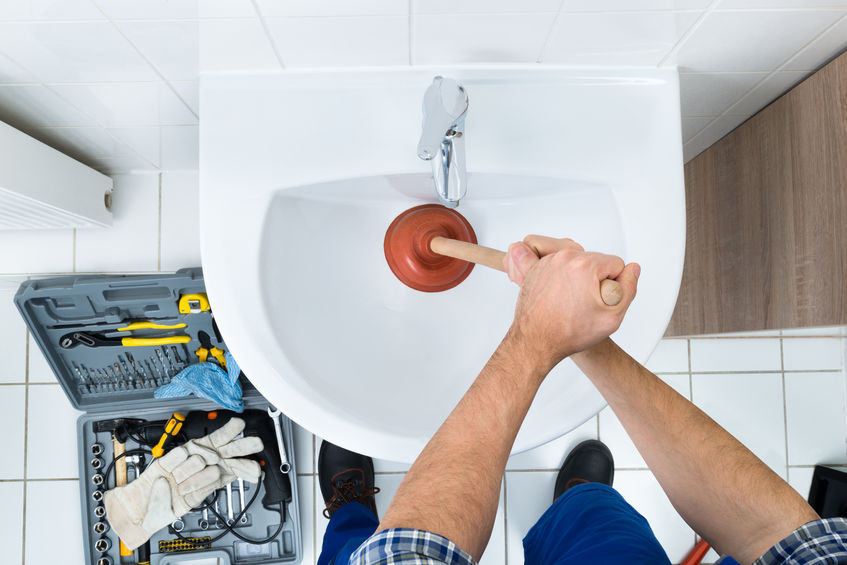Learn Plungers and Drain Cleaners: Top Techniques
Learn Plungers and Drain Cleaners: Top Techniques
Blog Article
Are you currently on the lookout for tips involving How to Unclog Your Sink with a Plunger?

Introduction
Proper maintenance of household drains is essential for preventing clogs and ensuring smooth water flow. One of the key tools in every homeowner's toolkit is the plunger, alongside various drain cleaners designed to tackle stubborn clogs effectively. This article explores how to use plungers and drain cleaners effectively to keep your drains flowing freely.
Section 1: Understanding Drain Cleaners
Types of Drain Cleaners
Drain cleaners can be chemical or enzymatic. Chemical cleaners use strong chemicals to dissolve clogs, while enzymatic cleaners use natural enzymes to break down organic matter.
How Drain Cleaners Work
Chemical cleaners react with clogs to dissolve them, while enzymatic cleaners break down organic materials like hair and grease without harming pipes.
Safety Considerations
Always wear gloves and eye protection when using chemical drain cleaners. Ensure adequate ventilation and follow manufacturer instructions carefully.
Eco-Friendly Alternatives
Consider using vinegar and baking soda or enzyme-based cleaners for eco-friendly options that are safer for pipes and the environment.
Section 2: Understanding Plungers
Types of Plungers
There are several types of plungers available, each designed for different types of drains and clogs. The most common types include cup plungers, flange plungers, and accordion plungers.
How Plungers Work
Plungers work on the principle of creating pressure and suction to dislodge clogs. When properly applied over a drain, they create a vacuum that can pull out debris or break up blockages.
Choosing the Right Plunger
Selecting the right plunger depends on the type of drain and the nature of the clog. Cup plungers are ideal for sinks and tubs, while flange plungers are better suited for toilets due to their design.
Common Mistakes with Plungers
Avoiding these mistakes ensures effective plunging: improper seal around the drain, insufficient force, and not clearing surrounding debris.
Section 3: Using Drain Cleaners Effectively
Application Techniques
Pour chemical cleaners directly into the drain opening. Allow them to work for the recommended time before flushing with hot water. Enzymatic cleaners should sit overnight.
Precautions
Avoid mixing different types of cleaners, as this can produce toxic fumes. Never use chemical cleaners in conjunction with a plunger, as splashing can occur.
Handling Stubborn Clogs
For persistent clogs, consider using a plumbing snake or calling a professional plumber to prevent damage to pipes.
Section 4: Using Plungers Effectively
Preparation
Before plunging, ensure the plunger covers the drain completely and forms a tight seal. Clear any visible debris around the drain opening.
Technique
Start with gentle plunging motions to build suction. Increase pressure gradually, using a steady rhythm. Repeat as necessary until the drain clears.
Troubleshooting Tips
If plunging doesn't work, try adjusting the seal, applying petroleum jelly for a better seal, or using a different type of plunger.
Conclusion
In conclusion, understanding how to use plungers and drain cleaners effectively is essential for maintaining healthy plumbing systems. By choosing the right tools and techniques, homeowners can tackle minor clogs and prevent major plumbing issues down the line.
5 Steps on How to Use a Plunger Effectively
Creating a Seal: Place the rubber cup of the plunger firmly over the toilet drain hole to create an airtight seal. This seal is crucial to prevent air from escaping and ensure effective plunging.
Plunge Gently: Gently press the plunger down to compress the air inside without causing splashing. This careful action sets the stage for effective unclogging without creating a mess.
Maintaining Pressure: Consistently apply pressure to the plunger while pushing and pulling it up and down. This sustained pressure generates the force needed to dislodge the clog.
Breaking the Clog: Continue plunging until you feel the clog release. Look for the water to start draining, indicating successful removal of the blockage.
Flushing and Cleaning: After clearing the clog, flush the toilet to confirm it's working properly. Clean the plunger with warm, soapy water and disinfect it for future use to maintain hygiene.
Additional Tips on How to Correctly Use a Plunger
if you encounter resistance, add some water to the bowl to create better suction;
check the plunger for any rubber cracks to ensure it's in good condition;
exercise patience and persistence, as certain clogs might need multiple attempts.
Mistakes to Avoid when Using Toilet Plunger
avoid using excessive force, as it may damage the toilet;
don't rush the process; take your time to ensure a proper seal and pressure;
never use a plunger if you've recently used chemical drain cleaners
Conclusion
Mastering the art of how to properly use a plunger is a valuable skill for every homeowner. By employing the correct techniques, you can effectively address clogs and ensure your toilet functions smoothly. Patience, persistence, and proactive in maintaining your plunger's hygiene are key to success in this endeavor.
Armed with these skills and principles, you can confidently handle plumbing issues as they arise, promoting a well-functioning and hygienic home environment.
https://homealliance.com/blogs/how-to-effectively-use-a-plunger-the-ultimate-guide

5 Steps on How to Use a Plunger Effectively
Additional Tips on How to Correctly Use a Plunger
Mistakes to Avoid when Using Toilet Plunger
Conclusion
Mastering the art of how to properly use a plunger is a valuable skill for every homeowner. By employing the correct techniques, you can effectively address clogs and ensure your toilet functions smoothly. Patience, persistence, and proactive in maintaining your plunger's hygiene are key to success in this endeavor.
Armed with these skills and principles, you can confidently handle plumbing issues as they arise, promoting a well-functioning and hygienic home environment.
https://homealliance.com/blogs/how-to-effectively-use-a-plunger-the-ultimate-guide
We are very serious about A Guide to Plungers (and How to Use Them) and I'm hoping you enjoyed reading our piece. Enjoyed reading our blog? Please share it. Let others discover it. Many thanks for being here. Please come by our blog back soon.
Request Your Service Report this page